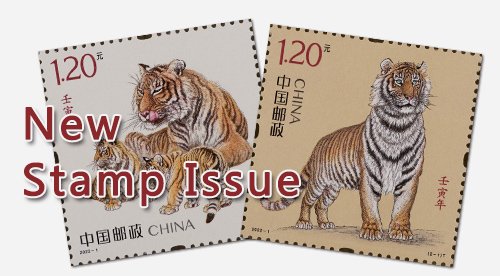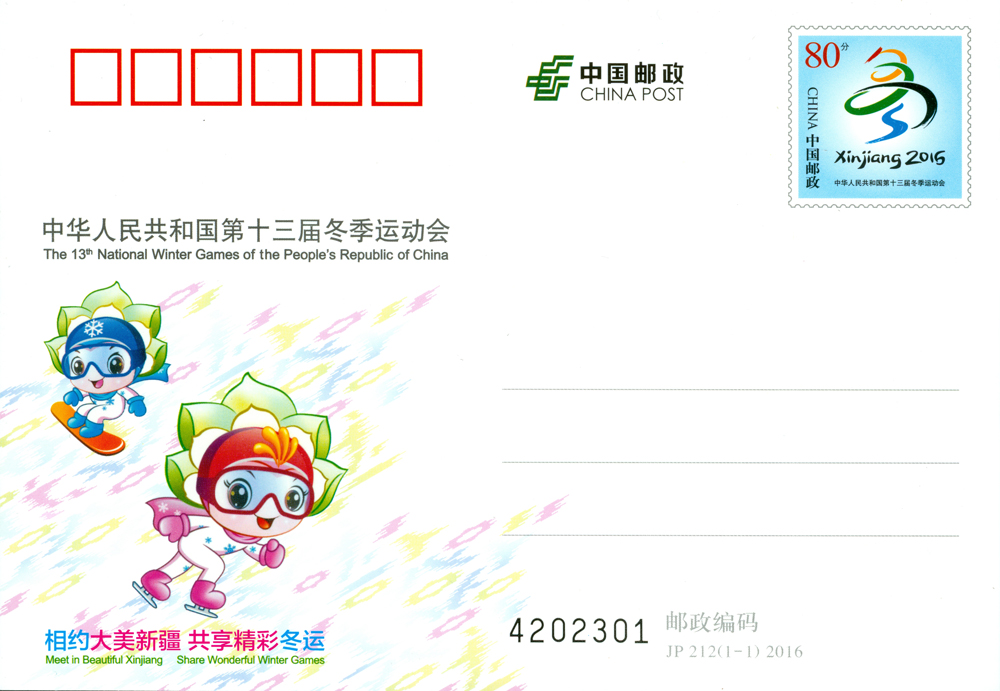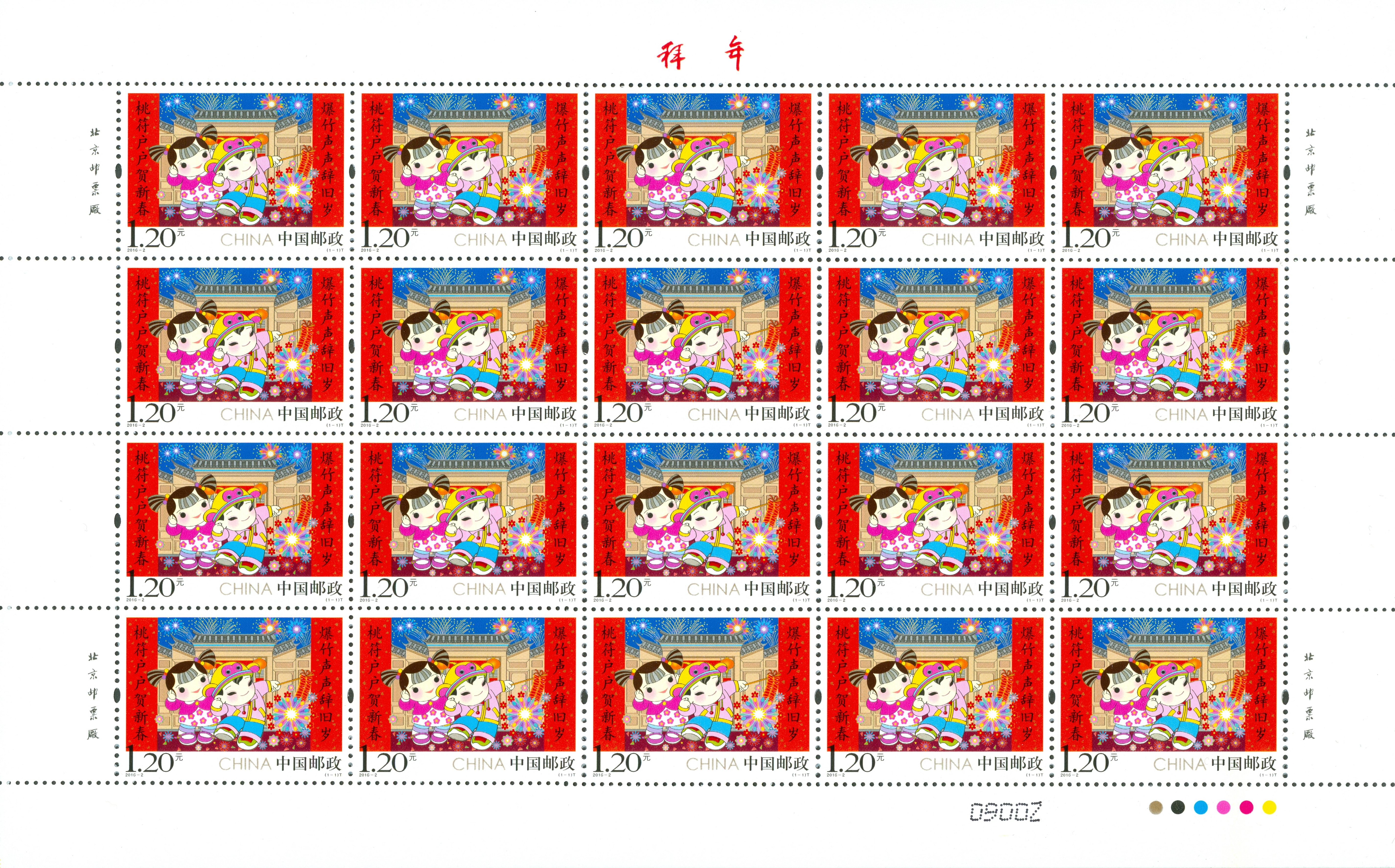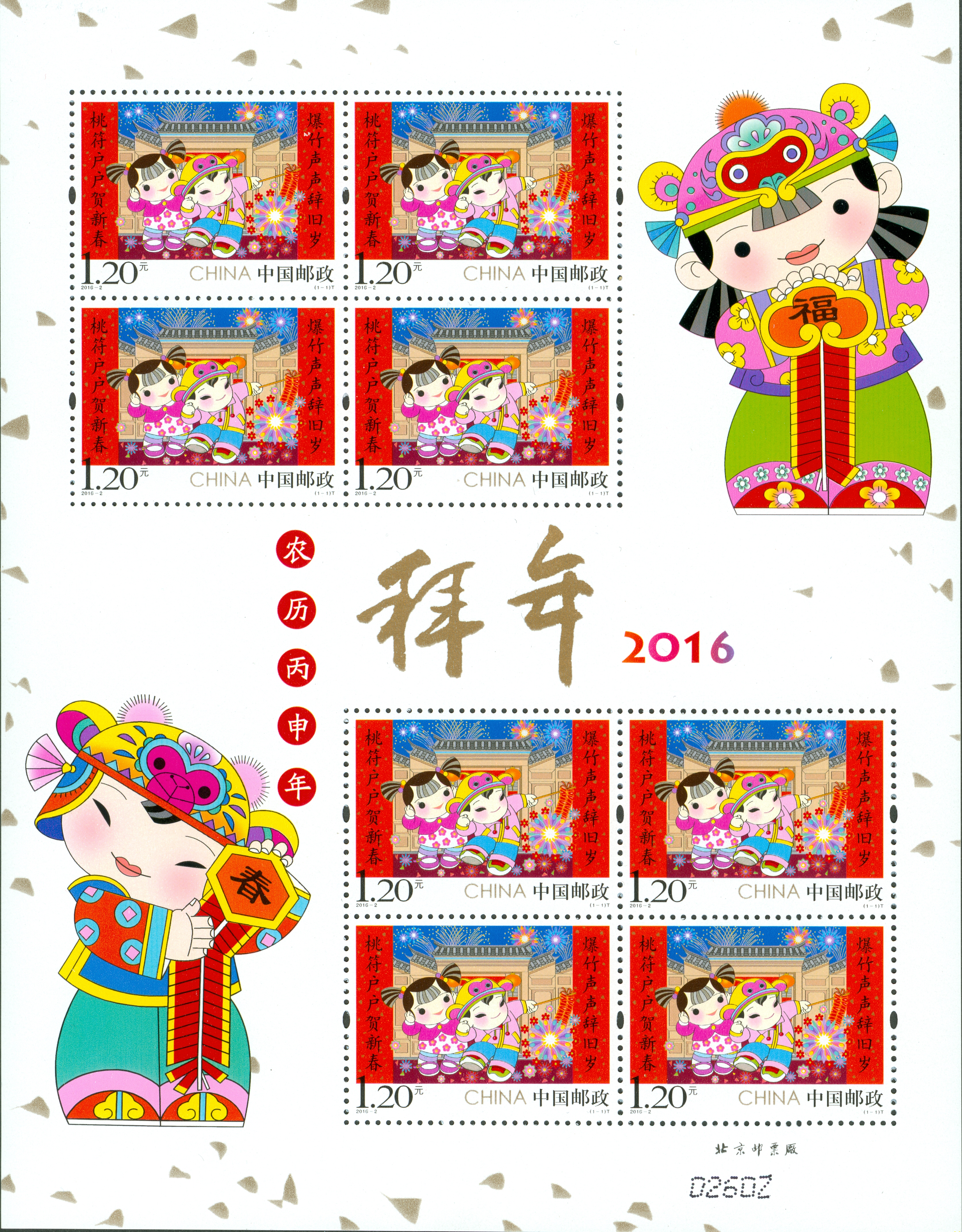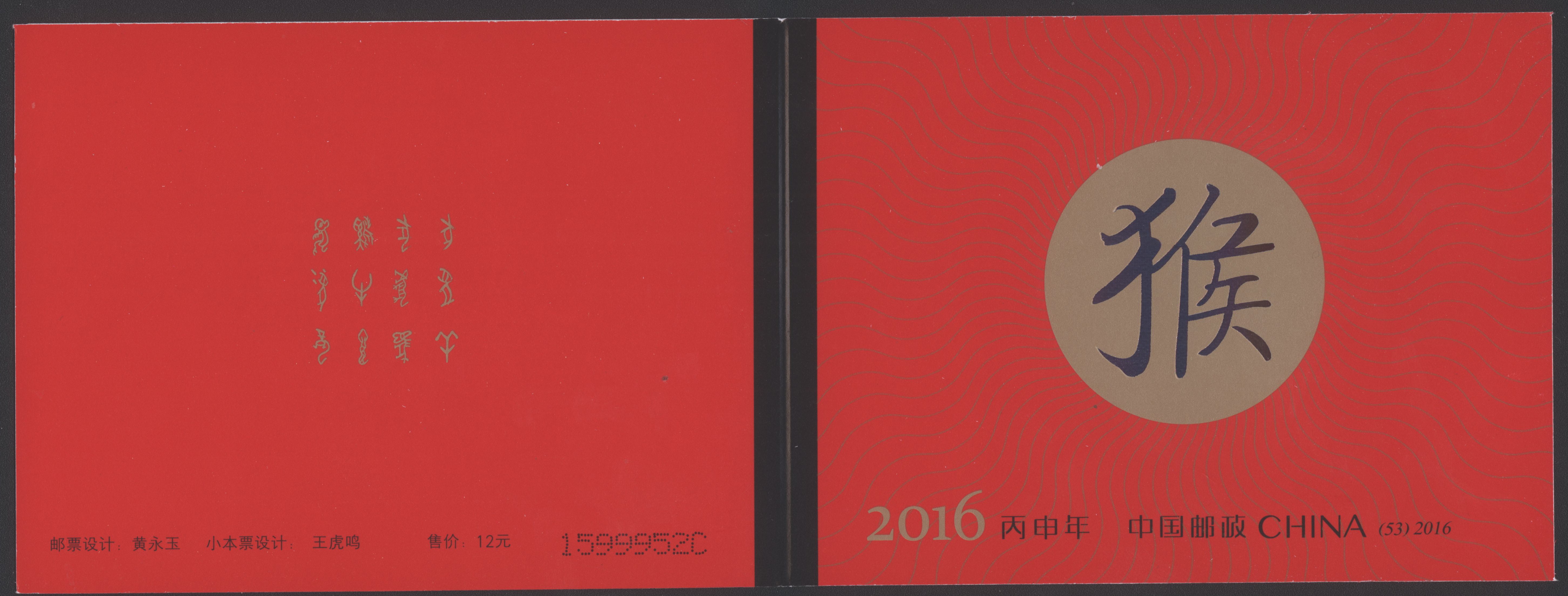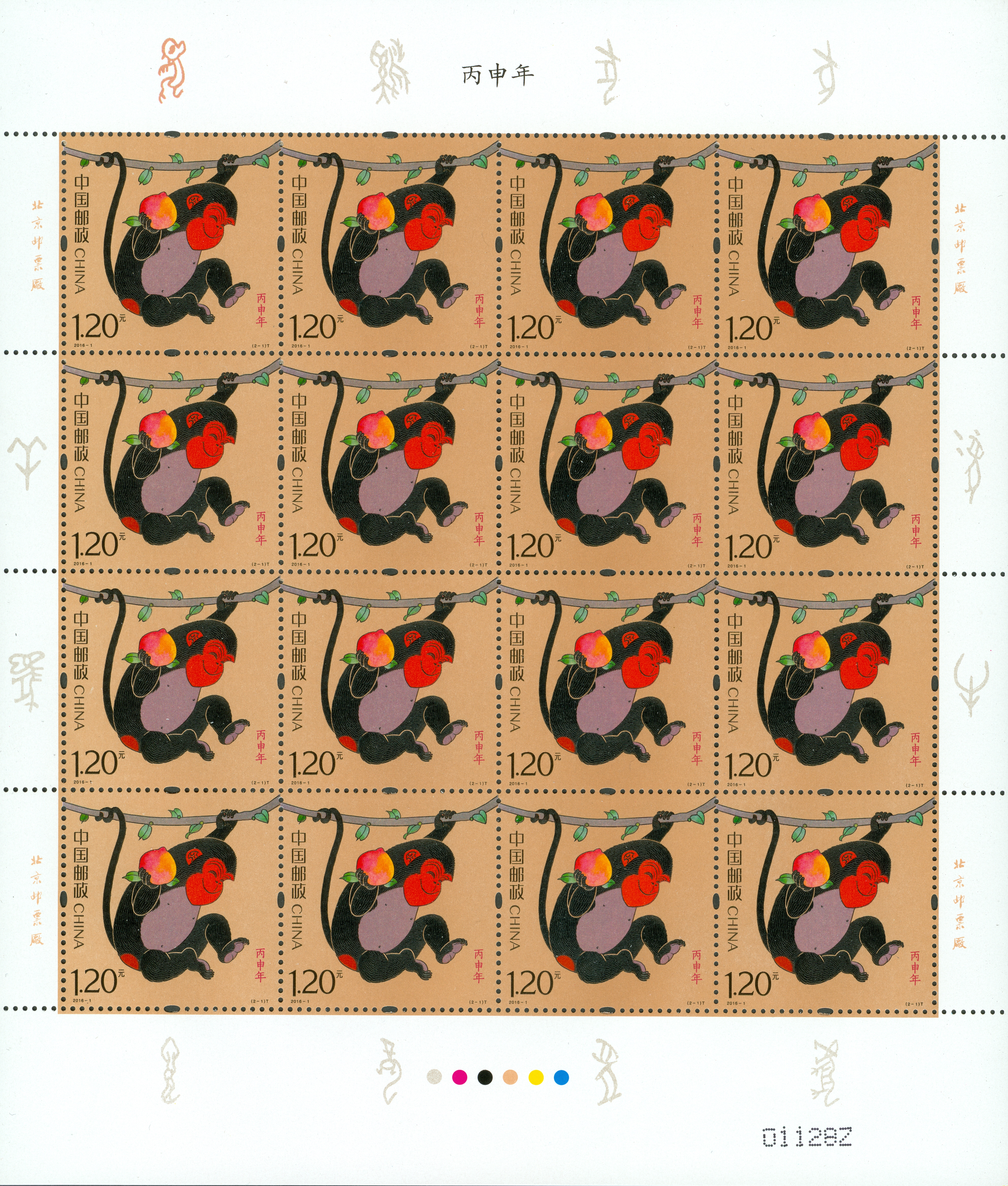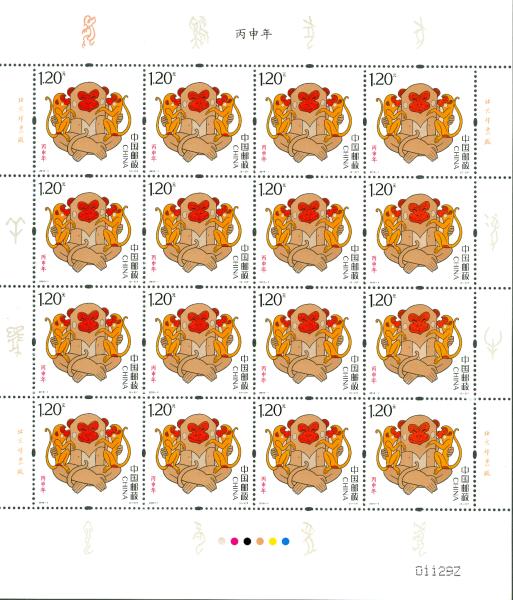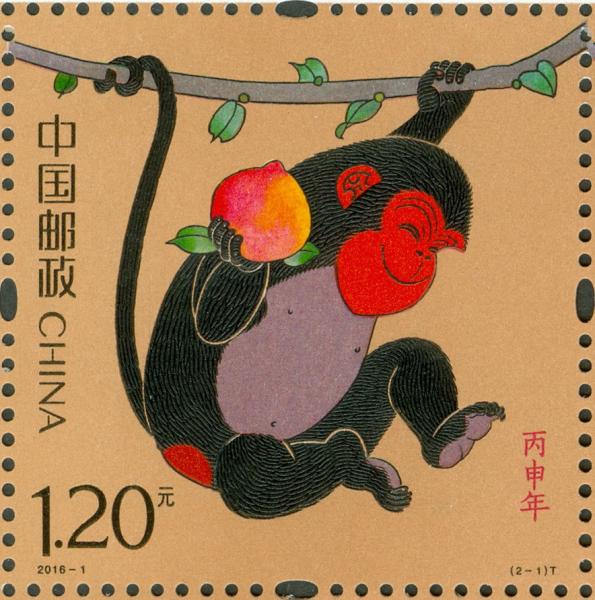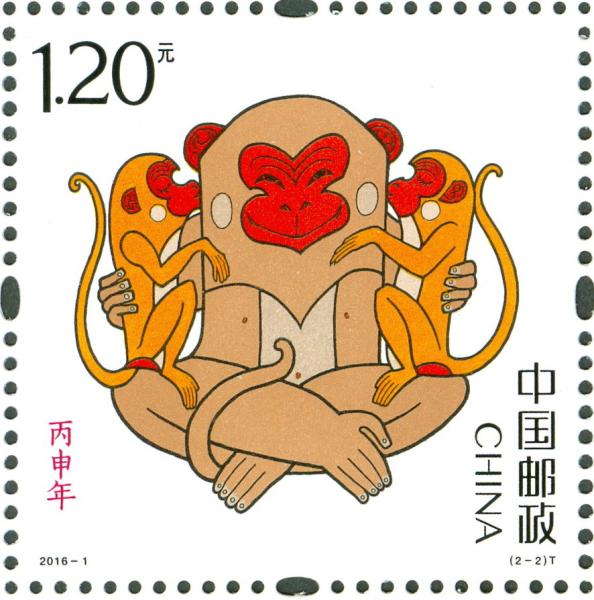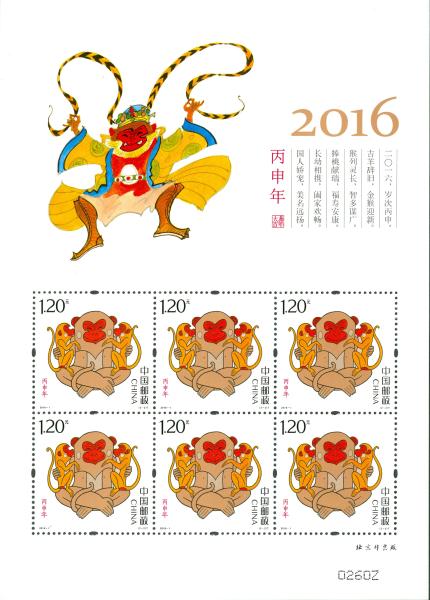 Postal Business: 8610 11185
Postal Business: 8610 11185Postal Savings: 8610 95580
Logistics and EMS: 8610 11183
China Post Life: 8610 4008909999
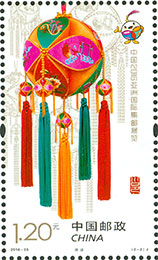 China 2016 Asian International Stamp Exh...2016-33
China 2016 Asian International Stamp Exh...2016-33The China 2016 Asian International Stamp Exhibition was held at the Nanning International Convention and Exhibition Center in Nanning City, south China's Guangxi Zhuang Autonomous Region, on December 2, 2016.
It was the fourth time the event was held in mainland China and the first time held in a minority nationality region.
The emblem of the exhibition combines two typical images: the city flower of Nanning, the Chinese hibiscus, and Great Dome of the Nanning International Convention and Exhibition Center. Together they signify beauty and friendship.
The mascot “Hydrangea Post Doll” takes the Guangxi hydrangea as its prototype to illustrate that the exhibition expresses emotion and exchanges in philatelic culture.
The campaign is significant in promoting the dissemination of philatelic culture, and cooperation and exchanges between China and other Asian countries.
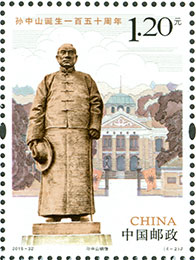 Sun Yat-sen’s 150th Anniversary...2016-32
Sun Yat-sen’s 150th Anniversary...2016-32Born in Zhongshan in south China’s Guangdong Province, Sun Yat-sen (November 12, 1866 – March 12, 1925) was a great national hero, patriot and pioneer of China’s democratic revolution.
Sun, whose courtesy name was Wen, and was self-titled Yixian, threw himself into the revolutionary cause of struggling against imperialism after he founded the Revive China Society in 1894, creating China’s modern national democratic revolution.
Under the leadership of Sun, the Xinhai Revolution, also known as the Revolution of 1911 or the Chinese Revolution, overthrew China's last imperial dynasty, the Qing , in 1911, ending the autocratic monarchy system that lasted for thousands of years in China and established the Republic of China (ROC). The revolution was named Xinhai (Hsin-hai) because it occurred in 1911, the year of the Xinhai stem-branch on the sexagenary cycle of the Chinese calendar.
Sun’s historic contributions to national independence, social progress and people’s happiness have been published in the annals of world history.
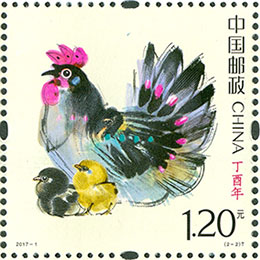 Year of the Yin Fire Rooster – Ding You...2017-1
Year of the Yin Fire Rooster – Ding You...2017-12017 is the year of the Yin Fire Rooster – Ding You in the stem-branch of the sexagenary cycle on the Chinese calendar – and the Year of the Rooster in the Chinese zodiac.
The rooster has been closely related to human life since ancient times. It crows at dawn, reminding people the beginning of a day. As poultry of virtue, the rooster is trusted by people for its reliability to crow no matter summer or winter.
Ji, rooster in Chinese, is homophonic with the character for luck in Chinese, giving it a prominent role in folk papercuts, New Year paintings and other arts.
- 最前 上一页 1 2 3 4
 Register number: 京ICP备15035540号 京公网安备110401400185号
Register number: 京ICP备15035540号 京公网安备110401400185号 Powered by CHINA POST | About Us | Sitemap | Contact Us |



